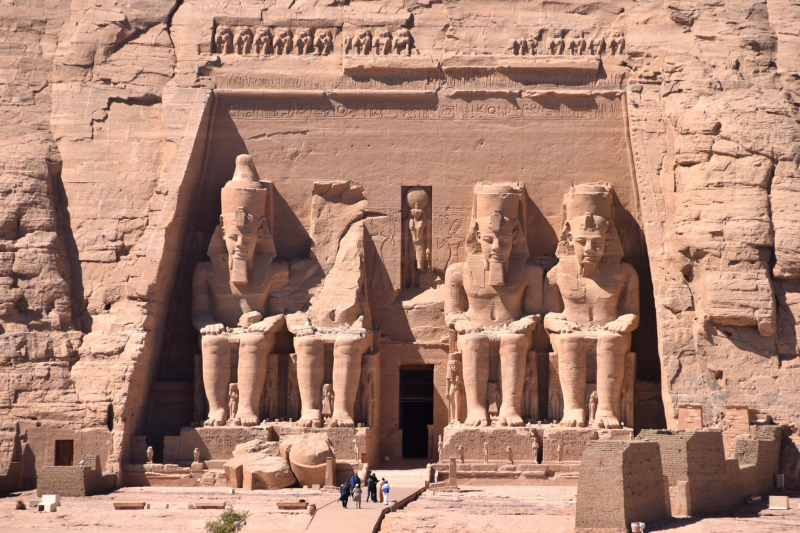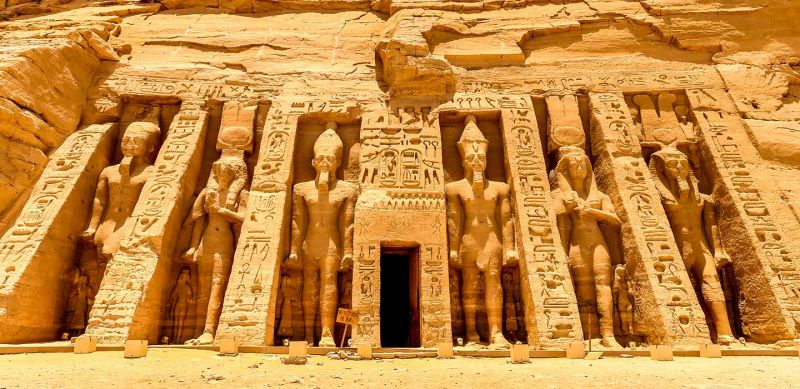During his reign, Egyptian architecture flourished
Ramses II had a strong interest in architecture. Several structures, monuments, and temples were created and rebuilt throughout his long reign. During his rule, there were several architectural triumphs in terms of diversity and design.
The massive temples of Ramesseum and Abu Simbel were two of the monumental achievements that he oversaw. In terms of size, design, and complexity, each of these temples represents a new architectural style. The gigantic statues of Ramses, which were common to both temples, were the temples' distinguishing features.
The Ramesseum temple, which was built on the banks of the Nile River and served as Ramses' mortuary temple, was dedicated to him. Abu Simbel was built in Nubia, Egypt's southernmost province, and its splendor may still be seen today.
There are four huge figures of Ramses II sitting on a throne at the entrance to Abu Simbel. Each of these sculptures is approximately 66 feet (20 meters) tall, and three have stood the test of time. The fourth figure, on the other hand, has been severely damaged. The temple is currently well-protected and a popular tourist destination.
Because he celebrated approximately 14 "Sed festivals" during his reign, his monuments were built alongside the temples. The Sed festival was held every three years after that to commemorate the jubilee year of 30 years in power. Ramses was made an Egyptian god after reigning for 30 years, according to tradition.
Ramses also constructed a new ancient Egyptian capital city in addition to these temples. Pi-Ramesses was the name of the capital. The city thrived under his leadership, and the infrastructure was superb. The capital, unfortunately, did not stand the test of time, and its beauty was lost when the people abandoned it.












